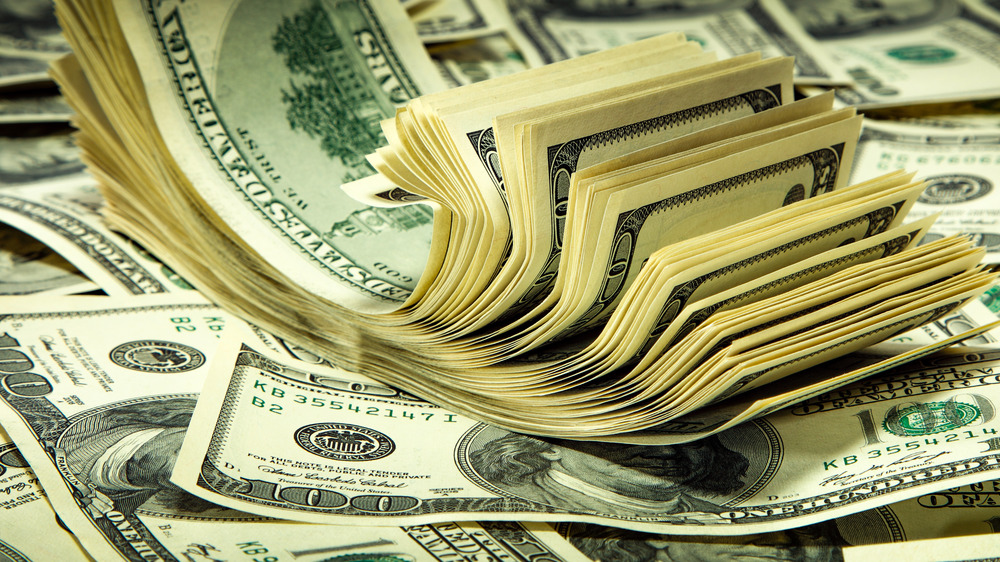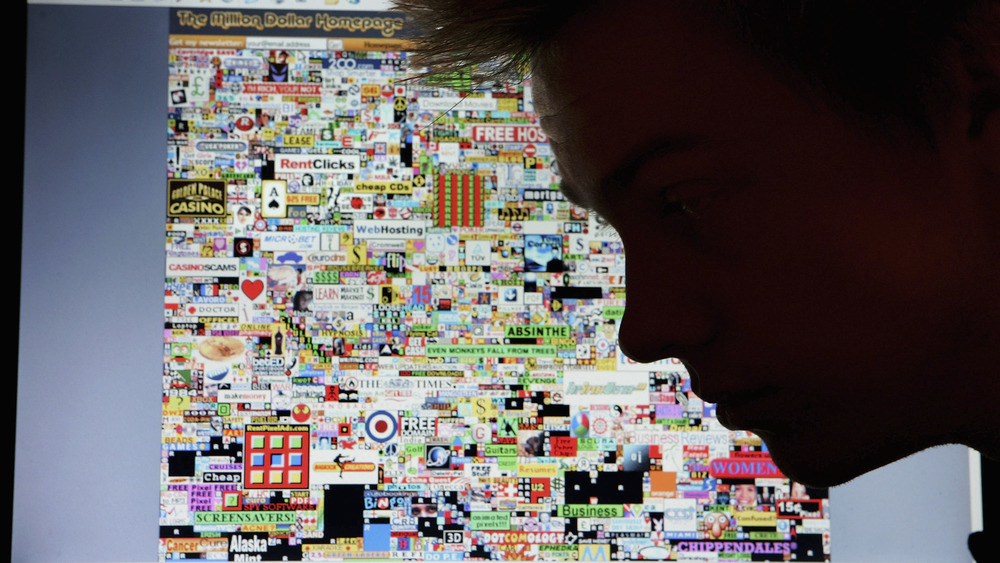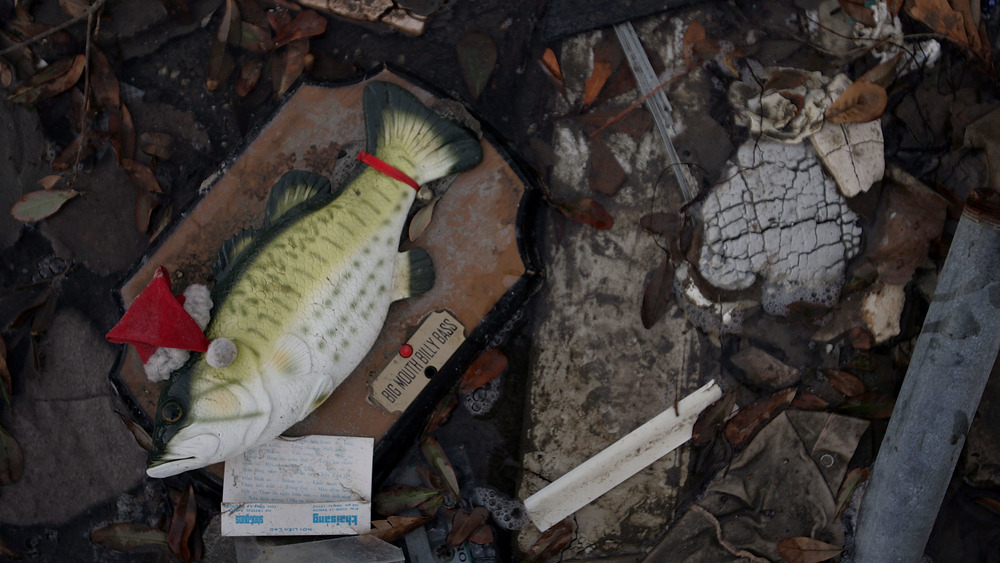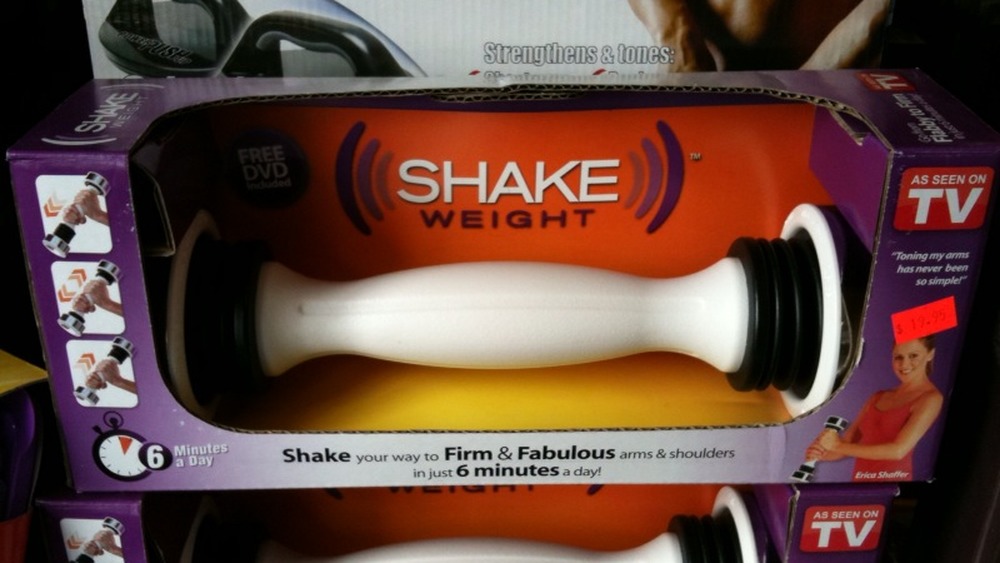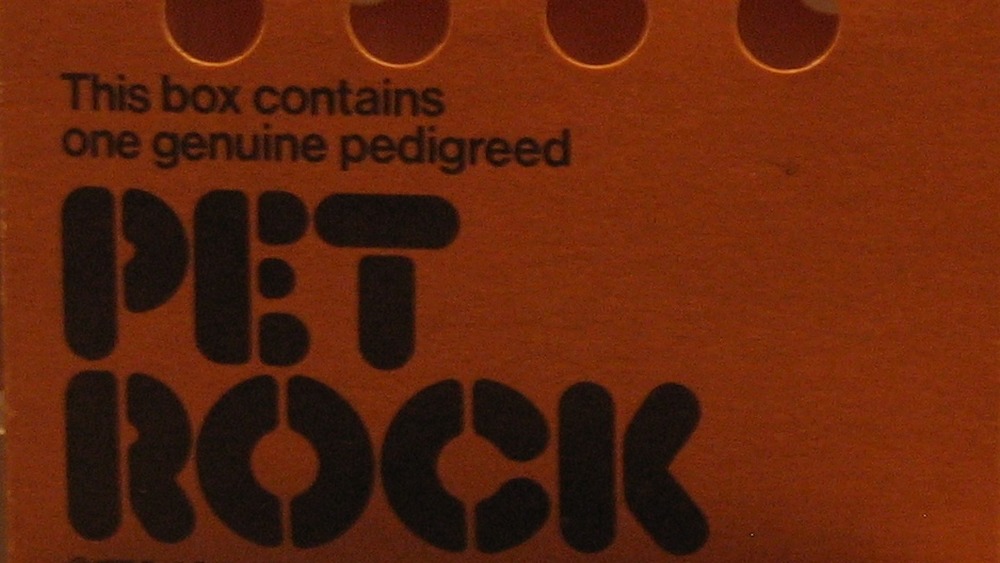Ridiculous Ideas That Made Millions Of Dollars
Sometimes the most ridiculous ideas have been used to turn a profit. According to Mitte, bottled water was first sold in 1621 in the United Kingdom's Holy Well bottling plant, and now bottled water revenue makes billions of dollars every year. Subprime mortgage lenders and hedge funds fueled the 2008 global recession, but some of the people who bet against it made hundreds of millions.
Just like how it's impossible to tell what's going to go viral sometimes, seemingly the worst ideas can sometimes make an absurd amount of money. Whether these ideas had lasting profitability is another story, but they certainly redefined the notion of a "get-rich-quick scheme."
And no matter what, a million dollars is a lot of money. Here's a sense for magnitude. If you spent $1 a second, it would take 27 hours to spend $100,000 and over 11 days to spend $1 million. Here are some ridiculous ideas that made millions of dollars.
An easy million
In 2005, Alex Tew had the idea to sell the pixels of a webpage. With $50 in domain fees, Tew started the Million Dollar Homepage, which had 1 million pixels that could be bought for $1 each. The only rule was that the pixels "couldn't be porn."
According to The Hustle, after lobbying his family and friends to buy over 4,000 pixels, Tew put out a press release that ended up being picked up by the mainstream media. That day, the site made over $3,000.
In three months, 999,000 pixels had been bought, and the last 1,000 ended up being auctioned off on eBay. According to the Library Innovation Lab, MillionDollarWeightLoss.com bought the final 1,000 pixels for $38,100.
Unfortunately, although the site appears to remain frozen in time, its functionality has certainly declined. Many of the advertisements now refer to broken 404 links, and out of the over 2,000 links, over 500 "are entirely unreachable." Almost another 500 refer to the wrong domain, which means that only about 1,700 links were actually reachable as of 2017.
Billy the Big Mouth Bass
Joe Pellettieri started working for Gemmy Industries, a novelty toy business, in 1998. Although Gemmy sold a few minor lip-syncing creatures, none of them saw the success that Big Mouth Billy Bass had. Pellettieri's wife Barbara was actually the one to suggest a singing fish on a plaque, and realizing that it was a great idea, Pellettieri rushed to create a prototype. Yet, people weren't initially so impressed.
But according to The Hustle, once Pellettieri's engineers figured out how to make the head move, with motion sensors adding the element of surprise, Pellettieri suddenly had an irresistibly funny product.
In one year, Big Mouth Billy Bass had made over $100 million in sales. And using Al Green's "Take Me to the River," the fish also earned hundreds in royalties for the singer. Apparently, Green has stated that he "made more money from royalties through the use of his song with Billy than he did from any other source." Although the novelty soon wore off, even the Queen of England had one.
Shake it off
The Shake Weight, which debuted in 2009, was a "dumbbell-like product" that used weighted resistance to work out biceps specifically. But what really set this product apart was its "As-Seen-On-Tv" commercial and, within a couple days, the commercial had been picked up by both daytime and late-night talk shows. It soon went viral, with even shows like South Park making fun of it.
This kind of ad time would've cost millions for the company to buy, and according to CNBC, this gave Shake Weight an immense amount of free advertising. Within one year, the company made over $40 million in revenue.
What made the advertisement hilariously ridiculous was the fact that the motion of working out with a Shake Weight was uncannily similar to lending a helping hand to someone else's muscle. Made for both women and men in varying weights, the sexual innuendo of the Shake Weight's advertisement made it an unforgettably ridiculous product. Whether it actually worked is another story.
The pet that rocks
However, few products can compete with the Pet Rock, which earned its creator Gary Dahl at least $15 million in the first year, per BC Business. Accompanied by a little owner's manual that offered instructions on taking care of the rock along with some tricks that it could play, the Pet Rock was marketed as the perfect hassle-free companion. It also came in an amusing little box with air holes for the rock.
According to The New York Times, within a couple of months over 1 million rocks had already been sold after it had its debut before Christmas in 1975. Although the fad soon wore off, despite attempts to prolong its life with "Pet Rock shampoo" and "Pet Rock Tshirts," Dahl wasn't the least bit disappointed.
Dahl tried his hand at other similar products like Canned Earthquake and the Official Sand Breeding Kit, but nothing would be as successful as the Pet Rock. His investors, however, had expected to earn a much more consistent revenue from the Pet Rock, and they sued Dahl for more of the profits. Dahl ended up settling and writing them a check for six figures, according to Investors Digest.
